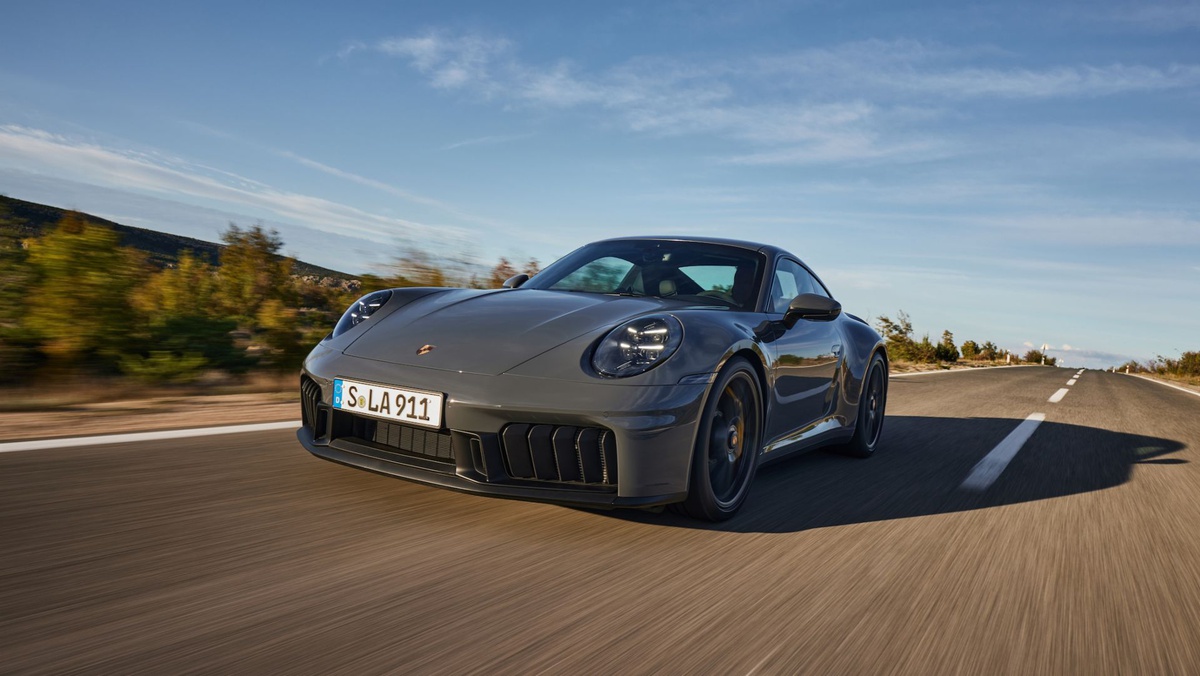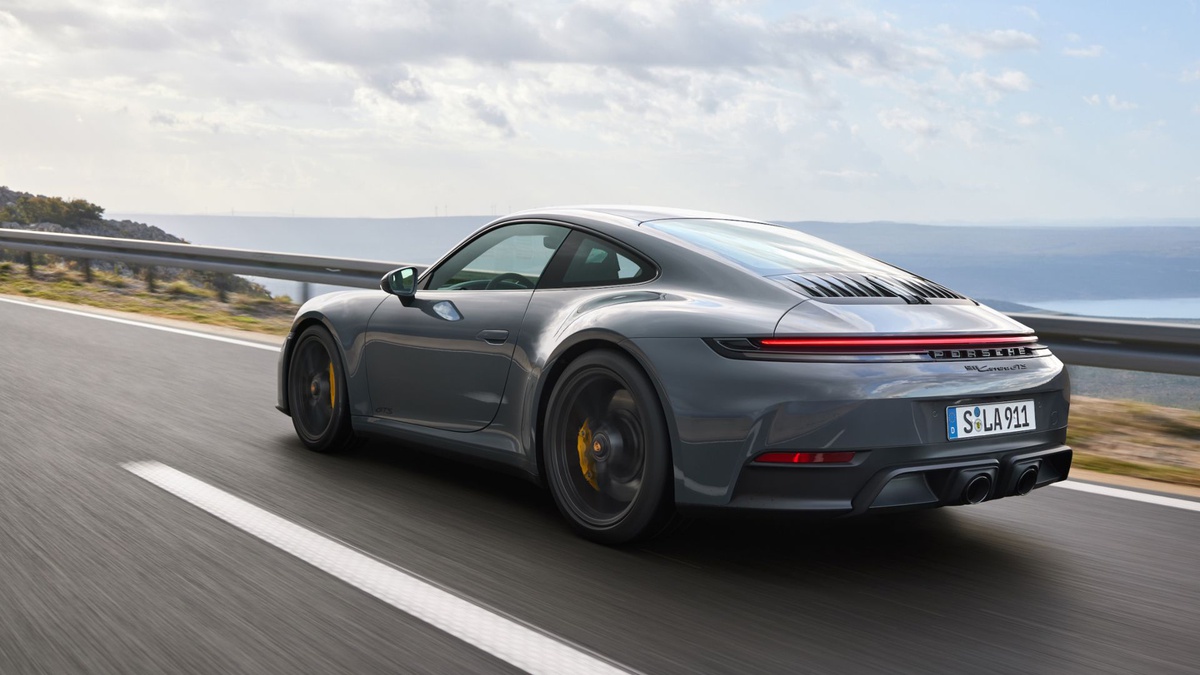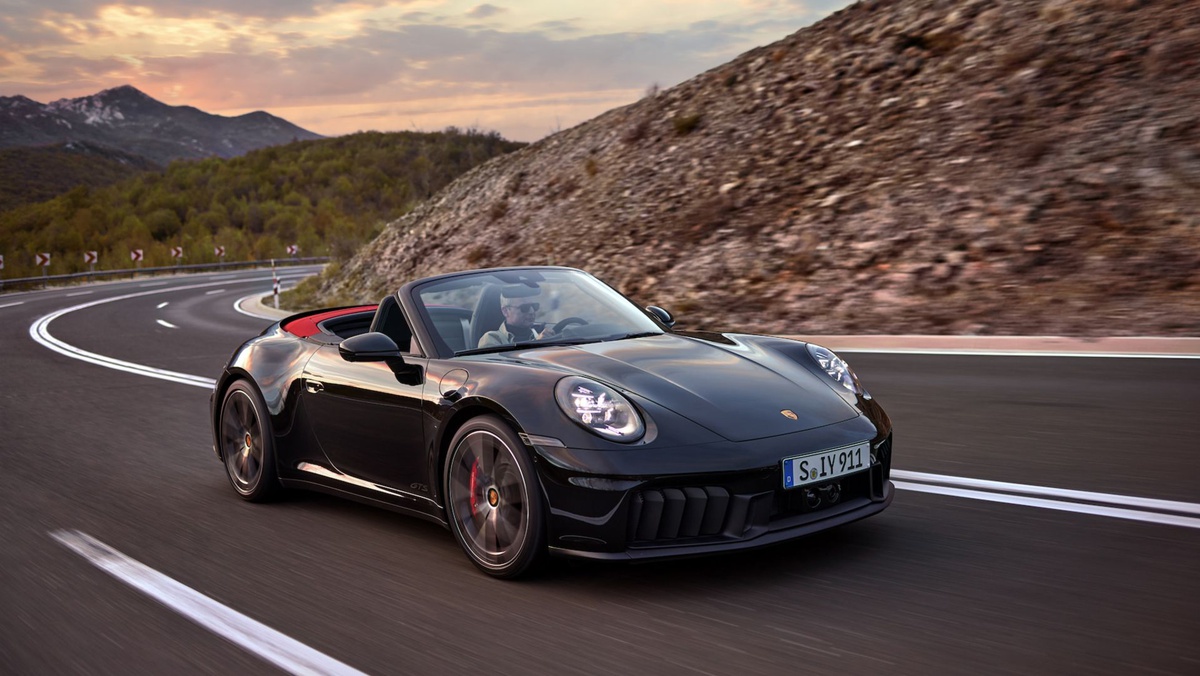The newly developed powertrain system, with 3.6 litres of displacement, delivers significantly improved driving performance. The 911 Carrera GTS Coupé accelerates from zero to 100 km/h in 3.0 seconds and reaches a top speed of 312 km/h.
The powertrain also includes a permanent magnet synchronous motor integrated into the new, more powerful eight-speed dual-clutch transmission (PDK). Even at idle speed, it supports the boxer engine with extra drive torque of up to 150 Nm and provides a power boost of up to 40 kW. Porsche couples both electric motors to a lightweight and compact high-voltage battery. It corresponds in size and weight to a conventional 12-volt starter battery, but stores up to 1.9 kWh of energy (gross) and operates at a voltage of 400 V. For an optimised overall weight, Porsche has installed a lightweight lithium-ion battery for the 12 V on-board electrical system.
The heart of the T-Hybrid drive is a newly developed 3.6-litre boxer engine. The high-voltage system allows the air-conditioning compressor to be driven electrically and the belt drive to be omitted as a result, making the engine much more compact. This creates space above the power unit for the pulse inverter and DC-DC converter. An enlarged bore of 97 mm and an increased stroke of 81 mm increase the displacement by 0.6 litres compared to its predecessor. The engine has VarioCam camshaft control and a valve control with rocker arms. It maintains the ideal mixture ratio of fuel and air over the entire map (lambda = 1).


Porsche 911 Carrera GTS
Even without electrical assistance, the boxer engine delivers 357 kW (485 PS) and 570 Nm of torque. In total, the system output is 398 kW (541 PS) and 610 Nm. The power increase over its predecessor is 45 kW (61 PS). The new 911 Carrera GTS also beats its predecessor in the sprint to 100 km/h, particularly off the line. The efficient performance hybrid achieves highly dynamic driving characteristics while at the same time reducing CO? emissions with significantly less extra weight compared to plug-in hybrid vehicles. The weight increase over its predecessor is a mere 50 kilograms.
The suspension of the 911 Carrera GTS has also been comprehensively revised. For the first time, rear-axle steering now comes as standard. It increases stability at high speeds and reduces the turning circle. Porsche has integrated the Porsche Dynamic Chassis Control (PDCC) anti-roll stabilisation system into the high-voltage system of the performance hybrid. This enables the use of an electro-hydraulic control system, which makes the system even more flexible and precise. The sports suspension with a variable damper system (PASM) and a ride height lowered by 10 mm provide characteristic GTS handling.
Porsche 911 Carrera
The 911 Carrera still features a 3.0-litre boxer engine with twin turbocharging. This engine, too, has been comprehensively revamped. Among other things, it has now adopted the intercooler from the Turbo models, which now sits directly under the rear lid grille, above the engine. The turbochargers in the new 911 Carrera were reserved for the GTS models in its predecessor. With these modifications, Porsche simultaneously achieves a reduction in emissions and a power boost to 290 kW (394 PS), along with maximum torque of 450 Nm. The new 911 Carrera Coupé goes from 0 to 100 km/h in 4.1 seconds (3.9 seconds with the Sport Chrono package) and boasts a top speed of 294 km/h. Compared to its predecessor, this represents an improvement of 0.1 seconds and 1 km/h respectively.
Exterior
Porsche has streamlined the exterior design of the 911 with carefully targeted updates. Most of these measures improve the aerodynamics and performance of the sports car. The changes include new, model-specific bumpers. For the first time, Porsche has also integrated all light functions into the now standard matrix LED headlights of the 911, with their characteristic four-point graphic. This makes it possible to omit the front driving lights and creates space for larger cooling vents in the front of the car.


Porsche 911 Carrera
On the 911 Carrera GTS models, the front end has five vertically arranged active cooling air flaps visible from the outside and another hidden flap on each side. For the first time in the 911, these are complemented by adaptive front diffusers in the underbody, which are controlled together with the cooling air flaps. These elements direct the air flow as required: when power requirements are minimal, closed flaps optimise aerodynamics. When power demand is high – for example in on-track situations – the flaps direct large amounts of air to the car’s radiators. The sensors for the assistance systems are now located behind a high-gloss surface below the number plate.


Porsche 911 Carrera GTS Cabriolet
With the relaunch of its iconic model, Porsche has modernised four of its six model lines in just a few months: Panamera, Taycan, Macan and 911
The updated 911 Carrera can be ordered now as a Coupé and Cabriolet with rear-wheel drive. For the 911 Carrera GTS, all-wheel drive and the Targa body variant (exclusively offered with all-wheel drive) are also available. Both model variants are equipped with Porsche Doppelkupplung (PDK) as standard.
The facelift of the Porsche 911 Carrera can now be ordered at prices starting at 128,700 euros. That's almost 6,000 euros more than before.
Prices for the very first hybrid 911, the 911 Carrera GTS Coupé, start at 170,600 euros. That's a whopping 15,000 euros more than last time. Deliveries in Germany will begin for the 911 Carrera in late summer and for the 911 Carrera GTS at the end of 2024.
Source: Porsche

